The Basics Of Goat Farming
Are you considering starting a goat farm, but don’t know where to begin? Here are some basics of goat farming to help you get started!
First and foremost: do your research! Make sure you understand the commitment and work it takes to raise goats. Goats require daily care and attention, as well as proper housing and fencing to keep them safe.
Second: choose the right breed for your needs. There are over 200 different breeds of goats in the world, each with their own unique characteristics and purposes. Some breeds are better for milk production, while others are better for meat or fiber. Consider your goals for your farm and choose a breed that fits those goals.
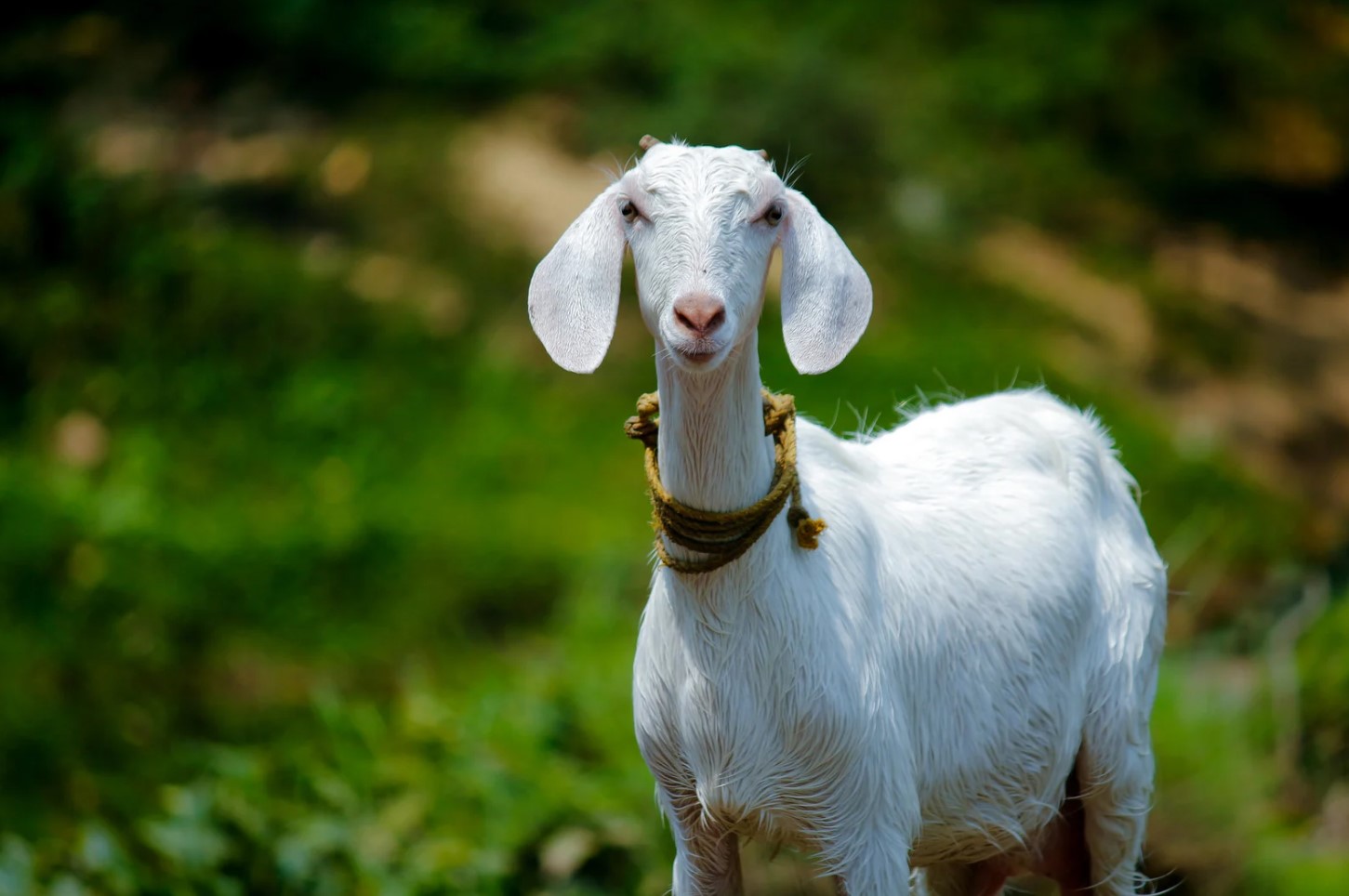
- Common dairy goat breeds: Alpine, Nubian, LaMancha
- Common meat goat breeds: Boer, Kiko, Spanish
- Common fiber goat breeds: Angora, Cashmere, Pygora
Third: prepare your farm for your new goats. Make sure you have enough space, shelter, and fencing for them. Goats are social animals and need companionship, so plan to have at least two goats on your farm. Provide them with fresh water and a balanced diet of hay, grains, and minerals.
| Goat Housing | Goat Fencing |
|---|---|
| Goats need a dry, draft-free shelter to protect them from the elements. This can be a barn, shed, or other structure. | Good fencing is essential to keep your goats safe and contained. Electric wire, field fencing, or stock panels are common options. |
Fourth: establish a relationship with a veterinarian who is experienced in treating goats. Goats can get sick from a variety of illnesses, and it’s important to have access to medical care when needed. Additionally, consider joining a local goat group or association to connect with other goat farmers and learn from their experiences.
With these basics of goat farming, you’ll be well on your way to raising happy and healthy goats!
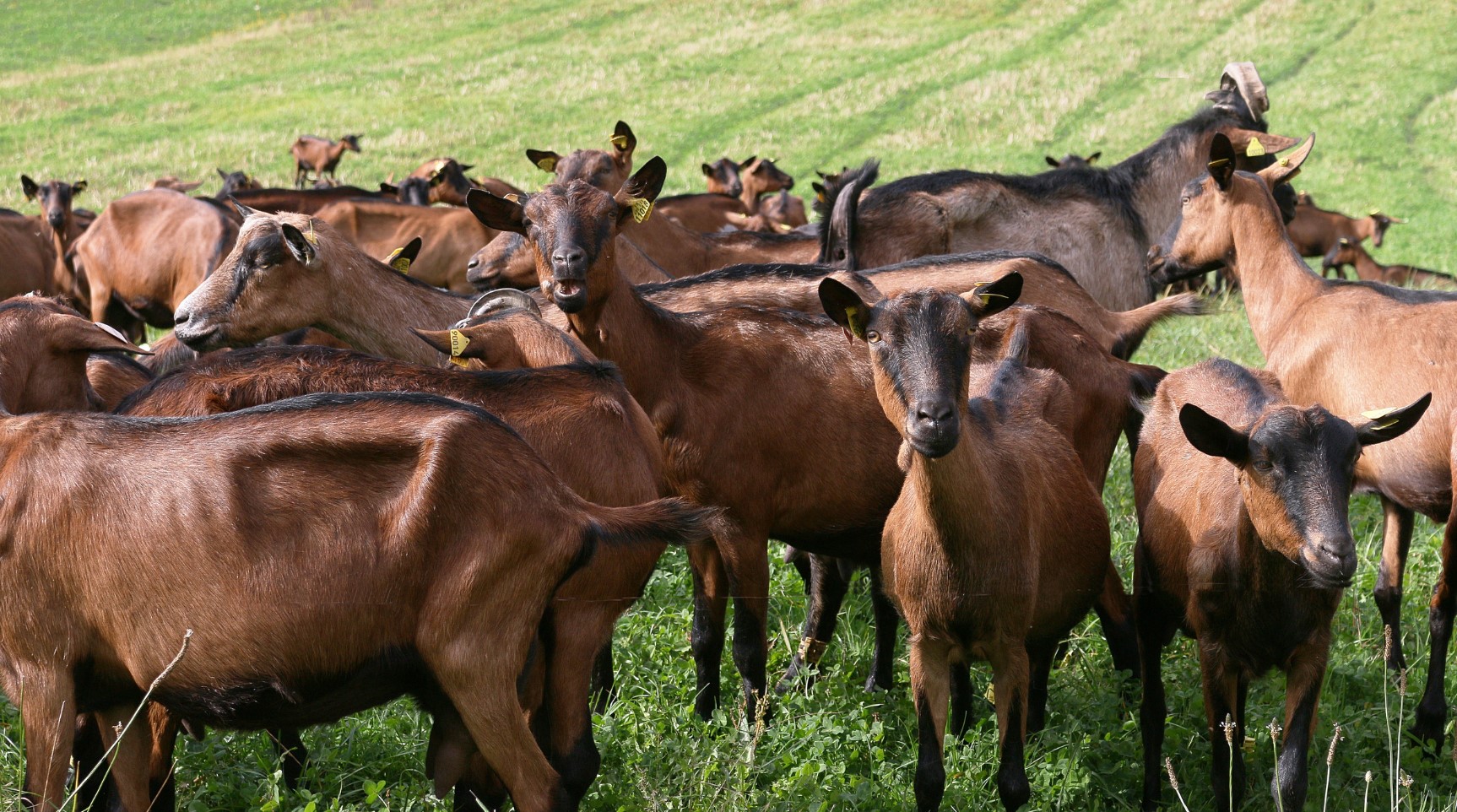
The Various Types Of Goats And Their Characteristics
Goats are fascinating animals that come in various shapes and sizes. Each type of goat has its unique characteristics that make them distinguishable from one another. A common type of goat is the domestic goat, which is typically raised for its milk, meat, fiber, and its ability to forage on land. The Nigerian Dwarf goat, which originated from West Africa, is a miniature goat breed that is easy to maintain and is an excellent milk producer. On the other hand, the Boer goat, which is a meat breed, originated from South Africa and is known for its quick growth rate and large size.
Another type of goat is the Pygmy goat, which is a small and hardy breed that originates from Cameroon in West Africa. This type of goat is commonly found in zoos and petting zoos because of their small size and friendly demeanor. The Saanen goat, which is a popular dairy breed, originated from Switzerland and is known for its high milk production and gentle nature.
- Nigerian Dwarf goat: Originated from West Africa
- Boer goat: Originated from South Africa
- Pygmy goat: Originated from Cameroon in West Africa
- Saanen goat: Originated from Switzerland
Other types of goat breeds include the Alpine goat, which is a hardy dairy breed that originated from the Alps, and the Spanish goat, which is a meat breed that is adaptable to harsh climates and terrains. Each type of goat breed has specific characteristics that make them suitable for various purposes.
| Type of goat breed | Origins | Characteristics |
|---|---|---|
| Nigerian Dwarf goat | West Africa | Miniature size, easy maintenance, excellent milk producer |
| Boer goat | South Africa | Quick growth, large size, meat breed |
| Pygmy goat | Cameroon, West Africa | Small size, hardy breed, friendly nature |
| Saanen goat | Switzerland | High milk production, gentle nature |
| Alpine goat | The Alps | Hardy dairy breed |
| Spanish goat | Spain | Adaptable to harsh climates and terrains, meat breed |
Overall, keeping various types of goats can be a rewarding experience, whether for their milk, meat, fiber, or their ability to forage and clear land. Understanding the unique characteristics of each goat breed can help farmers and backyard enthusiasts make informed decisions about which type of goat to raise.
The History Of Goat Domestication
Goats have been a part of human civilization for thousands of years. The history of goat domestication can be traced back to around 10,000 years ago in the Fertile Crescent region of the Middle East. It is believed that goats were the first animals to be domesticated by humans. The wild ancestor of the domestic goat is the bezoar ibex, which still exists in some parts of the world today.
The domestication of goats began when humans started to transition from a nomadic way of life to a settled, agricultural one. Goats were domesticated for their milk, meat, and hides, and they quickly became an essential part of human society. Goat milk, in particular, has been an important source of nutrition for many cultures throughout history.
- Goats have played an important role in many ancient civilizations, including those of the Middle East, Egypt, Greece, and Rome.
- In many cultures, goats have also been used for their wool or hair, which has been used to make clothing, carpets, and other textiles.
- In more recent times, goats have also been used for their ability to control weeds and maintain landscapes.
As humans spread across the world, they brought their goats with them. Goats have been introduced to every continent except Antarctica, and they have adapted to a wide range of climates and environments. In some places, goats have even become invasive species and have had a negative impact on local ecosystems.
| Country | Number of goats (millions) |
|---|---|
| China | 170.9 |
| India | 151.2 |
| Pakistan | 66.8 |
Today, there are more than 1 billion goats worldwide, making them one of the most widely kept domesticated animals. While goats are not as common in urban areas as they once were, they remain an important part of rural economies in many parts of the world.
In conclusion, the history of goat domestication is a fascinating subject that has shaped human civilization in many ways. From providing food and clothing to being used for weed control and landscape management, goats have played a vital role in human society for thousands of years, and they continue to do so today.
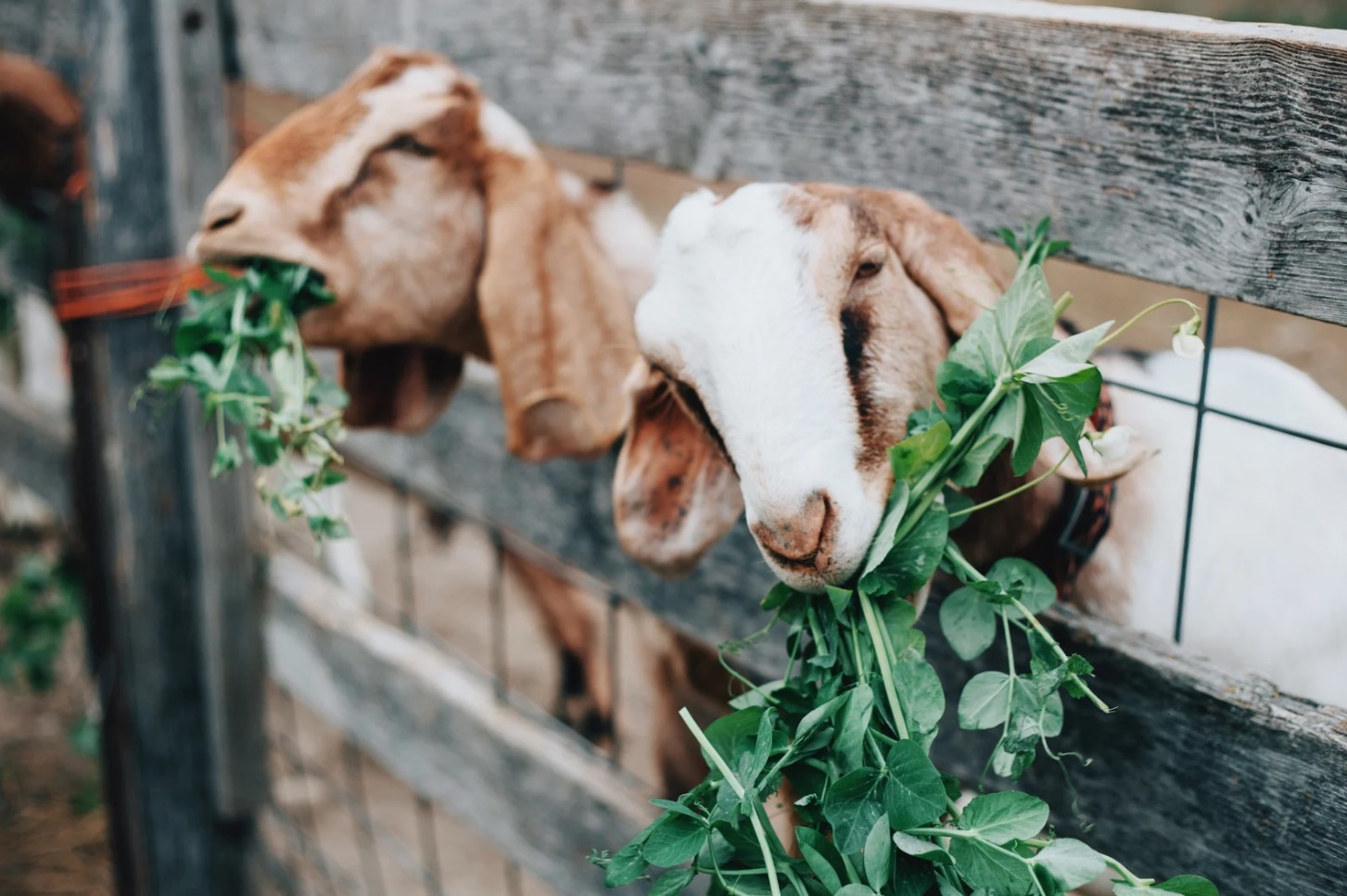
The Benefits Of Raising Goats For Milk And Meat
If you’re thinking of starting a small farm or homestead, you may want to consider raising goats for milk and meat. Goats have many benefits that make them a great addition to any farm. For one, they are easy to care for and do not require a lot of space. Unlike cows, they are also quite hardy and can thrive in most climates, making them a great option for homesteaders or small farmers who live in colder or more unpredictable areas. Additionally, goats can provide both milk and meat, making them a versatile and valuable addition to any farm.
One of the biggest benefits of raising goats for milk is the quality of the milk they produce. Goat’s milk is highly nutritious and is often easier for people to digest than cow’s milk. It contains less lactose than cow’s milk, making it a great option for individuals who are lactose intolerant or have trouble digesting dairy. Additionally, goat’s milk has a higher protein content than cow’s milk, making it a great option for those who are looking to increase their protein intake.
Raising goats for meat is also a great option for those who are looking to provide their family with high-quality, sustainable food. Goat meat is lean and has a unique flavor that is often described as being similar to lamb. It is also very nutritious, providing a good source of protein, iron, and other important nutrients. Additionally, goats are a relatively low-maintenance animal to raise, so they can be a great option for those who are looking to produce their own food but may not have a ton of time or resources to devote to animal husbandry.
- Goats are easy to care for and do not require a lot of space
- Goat’s milk is highly nutritious and easier to digest than cow’s milk
- Goat meat is lean, flavorful, and nutritious
- Goats are a low-maintenance animal to raise
Whether you’re looking to provide your family with nutritious, sustainable food, or simply enjoy the benefits of raising goats as a hobby, it’s clear that goats have a lot to offer. From their versatility to their hardiness, these animals are a great choice for anyone looking to get into farming or homesteading. So if you’re thinking of starting your own small farm or homestead, be sure to consider raising goats for milk and meat – you may be surprised by just how much they have to offer.
The Role Of Goats İn Sustainable Agriculture
Goats are one of the oldest domesticated animals in the world, and their role in sustainable agriculture cannot be overstated. They are versatile creatures that can provide milk, meat, fiber, and even natural weed control. Goats have been used as pack animals, dairy animals, and meat animals for thousands of years.
In sustainable agriculture, goats play an important role in maintaining the balance of the ecosystem. They can help reduce weed growth, which in turn can reduce the need for herbicides. They also help to keep pasture growth under control, which promotes grass growth and prevents overgrazing. Goats are also great at eating scrub and other unwanted vegetation that other animals won’t touch.
- Goats require less space than cows, making them a good choice for smaller farms.
- They are more resistant to disease than cows and require less medication.
- Goats require less food than cows, making them a more economical choice for farmers.
Goats also produce high-quality milk, which is considered superior to cow’s milk in many parts of the world. Goat milk is easy to digest and is an excellent source of nutrition, making it a good choice for people who are lactose intolerant or have difficulty digesting cow’s milk. Additionally, goat milk is an important ingredient in many traditional dishes around the world, making it an important cultural resource as well.
| Goat Breeds Used in Sustainable Agriculture | Characteristics |
|---|---|
| Nubian | High milk production, gentle nature |
| Saanen | High milk production, friendly temperament |
| Alpine | Adaptable to various climates, friendly nature |
| Kiko | Excellent for meat production, hardy and adaptable |
Overall, goats are an important and valuable part of sustainable agriculture. They provide a variety of economic, nutritional, and cultural benefits that make them a valuable resource to many farmers and communities around the world.
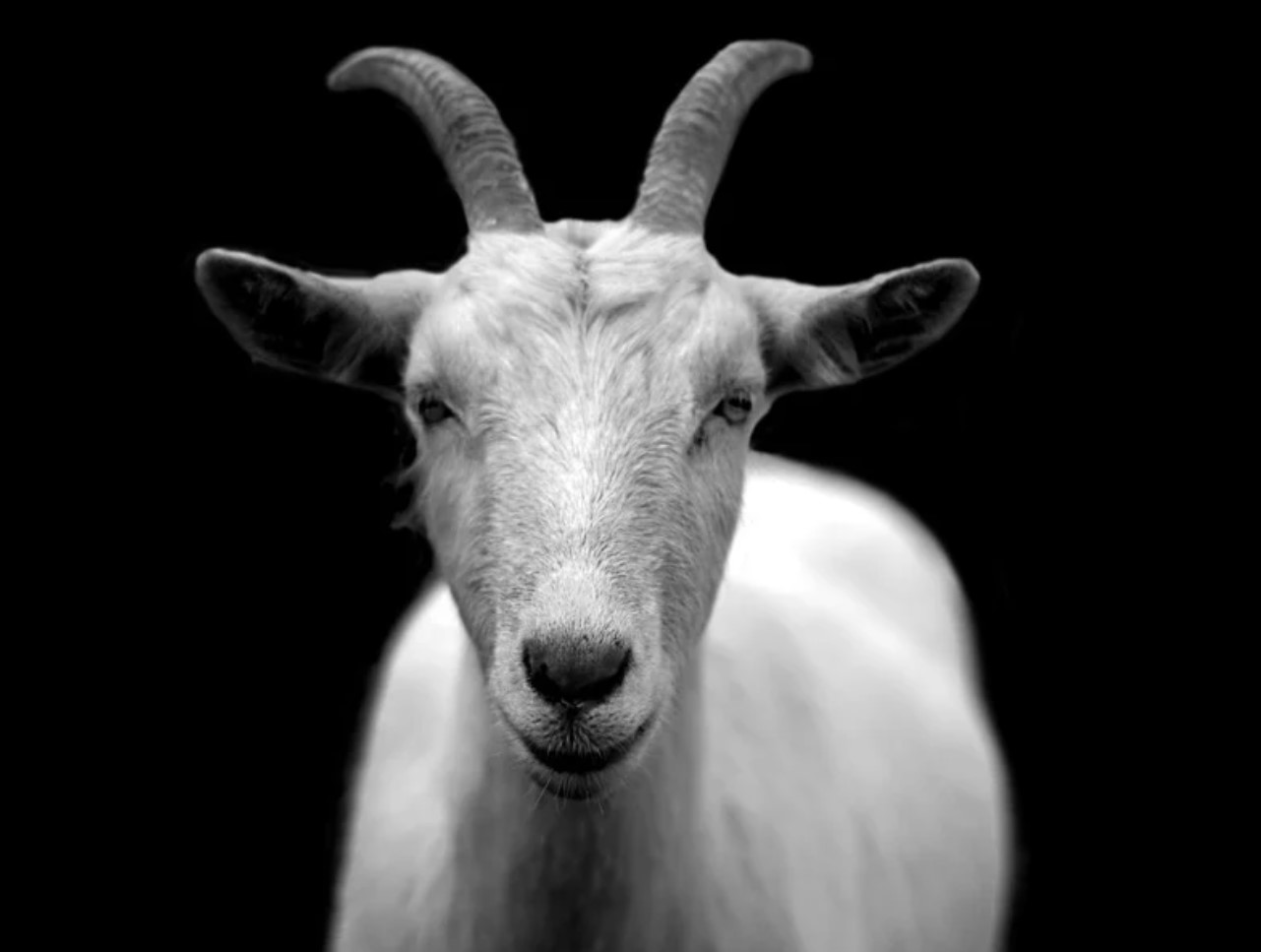
The İmportance Of Goat Genetics İn Breeding
Goat breeding is an important aspect of goat farming, as it enables farmers to produce healthy and productive animals that meet particular needs. The genetics of goats plays a crucial role in breeding, as it determines the characteristics of the offspring.
Genetics is the study of heredity or the passing of physical traits from one generation to another. It involves the study of genes, which are the basic units of heredity. Genes are located on chromosomes and carry the instructions for the development and function of living organisms.
- Some important qualities that farmers may consider when breeding goats include:
- High milk yield
- Meat production
- Fiber quality
- Disease resistance
- Tolerance to heat and cold
To achieve these qualities, farmers must select the appropriate breeding stock based on desirable traits. This can be done through various techniques such as natural breeding, artificial insemination, or embryo transfer.
| Benefits of Goat Genetics in Breeding |
|---|
| 1. Improves the quality of the herd |
| 2. Increases yield and productivity |
| 3. Increases resistance to diseases and parasites |
| 4. Increases adaptability and stability in harsh environments |
| 5. Enhances the nutritional value of milk, meat, and fiber |
Therefore, it is essential for farmers to understand the importance of goat genetics in breeding for sustainable production and herd improvement. With proper genetic selection, farmers can enhance the productivity and quality of their herds while improving the economic viability of their farms.
Maintaining Healthy Goats Through Proper Care And Nutrition
Goat farming is a lucrative business that requires proper care and attention in order to maintain healthy goats. In order for farmers to achieve success, they should follow the appropriate techniques and procedures needed to ensure that their goats are well-fed and taken care of. Here are some tips and strategies that are essential in maintaining healthy goats through proper care and nutrition:
- Provide clean water: Goats need clean water in order to stay healthy. Farmers should ensure that their goats have access to fresh water at all times. The water containers should be cleaned regularly to prevent the growth of bacteria and algae.
- Proper feeding: Goats require a balanced diet that contains essential nutrients such as protein, vitamins, and minerals. Farmers should provide their goats with high quality hay, grains, and supplements to meet their nutritional needs. It is also important to avoid overfeeding goats, as it can lead to health problems such as obesity.
- Regular exercise and pasture: Goats need to exercise and graze on pasture in order to maintain good health. Farmers should provide their goats with access to an outdoor area where they can graze and run around. This will not only improve their physical health, but also their mental well-being.
It is also important to regularly check the health of the goats to ensure that they are free of diseases and parasites. This can be achieved by regularly checking their eyes, ears, and coats for any signs of illness, and by providing them with the necessary vaccinations and medical treatment when needed. With proper care and nutrition, goats can live long and healthy lives, providing farmers with high quality milk, meat, and other products.
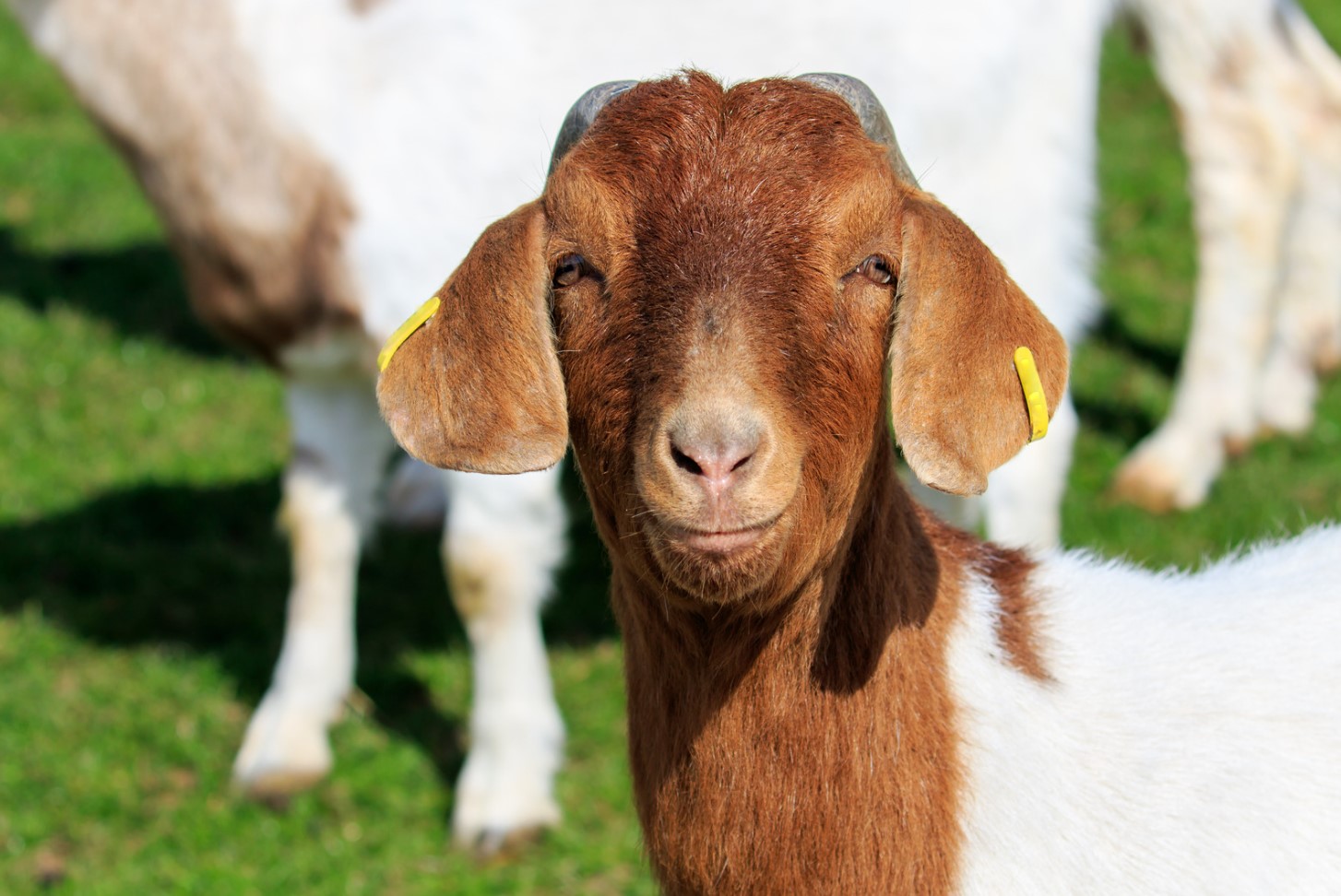
Raising Goats For Fiber Production
Raising goats is not just limited to milk or meat production. Goats can also be raised for their fibers. Goat fibers are known for being soft, warm, and hypoallergenic, making them perfect materials for clothing and home textiles. In this blog post, we will discuss the different aspects of raising goats for fiber production.
Types of Goats for Fiber Production: Not all goat breeds are suitable for fiber production. The most popular goats raised for their fibers are Angora goats, Cashmere goats, and Pygora goats. Angora goats produce Mohair fibers, Cashmere goats produce Cashmere fibers, and Pygora goats produce a blend of Cashmere and Angora fibers. Each of these goats has different needs in terms of nutrition, shelter, and grooming to ensure quality fiber production.
- Angora Goats: Angora goats require a diet high in protein and a warm and dry shelter. They need to be sheared twice a year to prevent matting and felting of their curls. They produce around 5 to 10 pounds of fiber per year.
- Cashmere Goats: Cashmere goats require a diet rich in fiber and a cool and dry shelter. They need to be regularly brushed to remove any loose fibers and avoid overgrowth of their coats. They produce around 4 to 6 ounces of fibers per year.
- Pygora Goats: Pygora goats require a diet rich in protein and a shelter that is cool and dry. They need to be sheared once a year, and their fibers need to be separated manually from their undercoat. They produce around 10 to 18 ounces of fibers per year.
Care and Maintenance: Raising goats for fiber production requires proper care and maintenance. Goats raised for their fibers need a balanced and nutritious diet, proper grooming, and regular health checkups to ensure their wellbeing. The fiber harvested from them should also be cleaned and processed to maintain its quality.
| Fiber Type | Processing Method |
|---|---|
| Mohair (Angora) | Shearing, cleaning, carding, spinning, and dyeing |
| Cashmere | Combing, sorting, cleaning, and spinning |
| Pygora (Cashgora or PygoraBlend) | Shearing, sorting, cleaning, blending, carding, spinning, and dyeing |
Conclusion: Raising goats for fiber production is a rewarding and lucrative venture. It provides high-quality fibers that are sought after by many textile industries. However, it requires proper knowledge, care, and maintenance to ensure quality fiber production. With the right breed, nutrition, grooming, and processing methods, raising goats for this purpose can be a profitable and fulfilling experience.
The Role Of Goats İn Cultural And Religious Practices
Goats are not only valuable for farming purposes but also play a significant role in cultural and religious practices across the world. Since ancient times, goats have been used in various rituals, ceremonies, and folklore across different cultures. From biblical stories to Hindu mythology, goats have been an essential part of various religious ceremonies and practices around the world.
In Hindu culture, goats are considered holy, and it’s believed that offering a goat to the Gods will bring good fortune and blessings to the worshipper’s life. During the annual festival of Navratri, people offer a goat to the Goddess Durga as a mark of devotion. In Islam, during the festival of Eid al-Adha, Muslims sacrifice goats as directed by the Quran, in order to commemorate Prophet Ibrahim’s willingness to sacrifice his son for Allah.
Goats have also found their place in folklore tales across different cultures. In Greek mythology, the Satyrs, half human and half goat, were commonly portrayed playing flutes and accompanying the God of Wine, Dionysus in his revelries. In many African cultures, the goat is considered a symbol of wealth and used as dowry during wedding ceremonies.
- Goats have been used in various rituals, ceremonies, and folklore across different cultures.
- In Hindu culture, goats are considered holy, and it’s believed that offering a goat to the Gods will bring good fortune and blessings to the worshipper’s life.
- In Islam, during the festival of Eid al-Adha, Muslims sacrifice goats as directed by the Quran, in order to commemorate Prophet Ibrahim’s willingness to sacrifice his son for Allah.
- Goats have also found their place in folklore tales across different cultures.
- In Greek mythology, the Satyrs, half human and half goat, were commonly portrayed playing flutes and accompanying the God of Wine, Dionysus in his revelries.
| Religion/Culture | Role of Goats |
|---|---|
| Hindu | Offered to God during festivals and considered holy |
| Islam | Sacrificed during the festival of Eid al-Adha to commemorate Prophet Ibrahim’s willingness to sacrifice his son for Allah |
| Greek Mythology | Satyrs, half goat-half human, played flutes and accompanied the God of Wine, Dionysus in revelries |
| African cultures | Used as dowry during wedding ceremonies, considered a symbol of wealth |
In conclusion, goats have proven to be more than just a commodity in farming; they have been revered across various cultures and religions for centuries. These animals have played unique roles in different mythologies, religious practices and ceremonies that have been passed down through generations. Understanding the cultural and religious importance of goats will go a long way in preserving the history and traditions attached to these animals.
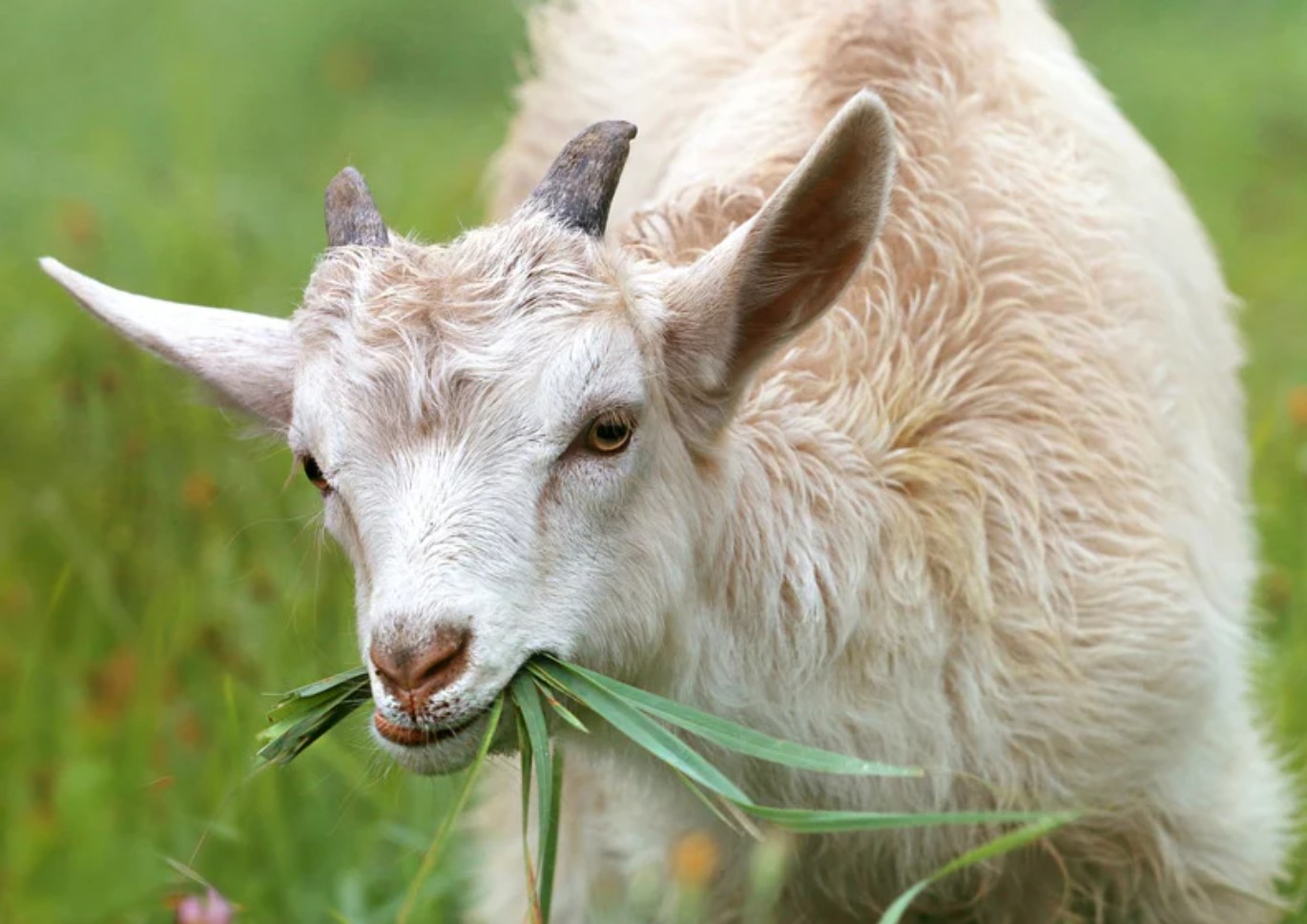
The Environmental İmpact Of Goat Farming
Goat farming, like any agricultural practice, has an impact on the environment. The impact of goat farming on the environment depends on several factors, including the type and size of the farm, the practices used by the farmer, and the location of the farm.
One of the major environmental impacts of goat farming is land use. Goats require land to graze, and as such, goat farming often results in deforestation and habitat destruction. In addition, goat farming can lead to soil erosion and degradation, which can have long-term effects on the ecosystem.
- Another environmental impact of goat farming is water use. Goats require water to drink and for cleaning and sanitation. Large-scale goat farms can use a significant amount of water, which can put pressure on local water resources. This can be particularly problematic in areas where water is scarce or where there are already water shortages.
Goat farming also produces waste, which can have environmental impacts. Goat manure can be a valuable source of fertilizer for crops, but if not managed properly, it can lead to water pollution and other environmental problems. Large-scale goat farms can also produce a significant amount of animal waste, which can be difficult to dispose of safely and responsibly.
There are, however, ways to maintain sustainable goat farming practices that can minimize the environmental impact. For example, using rotational grazing techniques can help reduce deforestation and soil degradation. Proper manure management can also help reduce water pollution, and the use of renewable energy sources like solar power can reduce the carbon footprint of goat farming.
| Benefits of sustainable goat farming practices: | Increase environmental sustainability. |
|---|---|
| Reduce environmental impacts of farming on water sources. | |
| Reduce carbon footprint of farming through energy efficiency. | |
| Reduce incidence of diseases related to poor animal husbandry. |
In conclusion, goat farming can have a significant impact on the environment. However, with the right practices and techniques, it is possible to minimize the environmental impact of goat farming and even use it to enhance the local ecosystem.
The Challenges And Solutions For Goat Farmers
The challenges of goat farming are numerous, but with proper management, these obstacles can be overcome. Weather, predators, and diseases are just a few of the challenges that goat farmers face. Luckily, there are solutions and preventative measures that farmers can take to mitigate these challenges and ensure their success.
Weather: Weather can be unpredictable and extreme, causing problems for the health and wellbeing of your goats. Extreme cold or heat can be deadly, and severe storms and flooding can cause significant damage. One solution is to build sturdy housing for your goats that can protect them from extreme weather conditions. Additionally, ensuring that your goats have access to clean water and food can help them better withstand these conditions.
Predators: Predators such as coyotes or wolves can be a constant threat to your goats. One solution is to build sturdy fencing around your property that can keep predators out. Additionally, keeping a watchful eye on your goats can help you spot any potential threats early on. Finally, using guard animals such as dogs or llamas can be an effective way to deter predators.
- Diseases: Diseases, both common and rare, can spread quickly among your herd and can be difficult to treat. One solution is to work with a veterinarian to develop a preventative herd health plan. This can include vaccinations, regular check-ups, and proper sanitation practices. Additionally, quarantining new goats before introducing them to your herd can help prevent disease transmission.
Overall, goat farming can present many challenges, but with proper management and preventative measures, these obstacles can be overcome. Working with a veterinarian and implementing sound management practices can help ensure the success of your goat farm. By taking the necessary precautions and being proactive, goat farmers can enjoy the benefits of a thriving herd and a successful operation.
Goat Breeds That Are Endangered And İn Need Of Conservation
Goats have been domesticated for thousands of years and have played an important role in the lives of humans. They provide milk, meat, fiber and their droppings are used as fertilizer. However, not all goat breeds are thriving. Some breeds are endangered and in need of conservation efforts. Here, we’ll discuss some of these breeds and why they are important to preserve.
Nubian goats are popular for their high butterfat content and can produce up to two quarts of milk per day. They are also known for their distinctive long, drooping ears and their friendly personalities. However, due to crossbreeding with other goat breeds, the purebred Nubian goats are now critically endangered.
- San Clemente Island goats, a breed native to California’s San Clemente Island, were introduced to the island 150 years ago by the US Navy. They are known for their hardiness and adaptability to harsh environments. Unfortunately, their population has dwindled to only about 400 individuals due to habitat loss and hunting by feral pigs.
- Kidsboro goat, a rare breed found only in the mountains of northern Georgia, are adapted to living in rugged terrain and are known for their long, wavy hair. Their population is less than 500 and they are listed as critically endangered.
| Breed | Population | Conservation Status |
|---|---|---|
| Nubian | Critically endangered | Priority breed for conservation |
| San Clemente Island | Less than 400 | Critically endangered |
| Kidsboro | Less than 500 | Critically endangered |
In addition to these breeds, there are many others that are in need of conservation efforts. Some breeds have unique genetic traits that make them valuable for research or for breeding programs. Others have cultural or historical significance. By conserving these breeds, we are helping to preserve biodiversity and ensure the survival of these amazing animals for future generations.
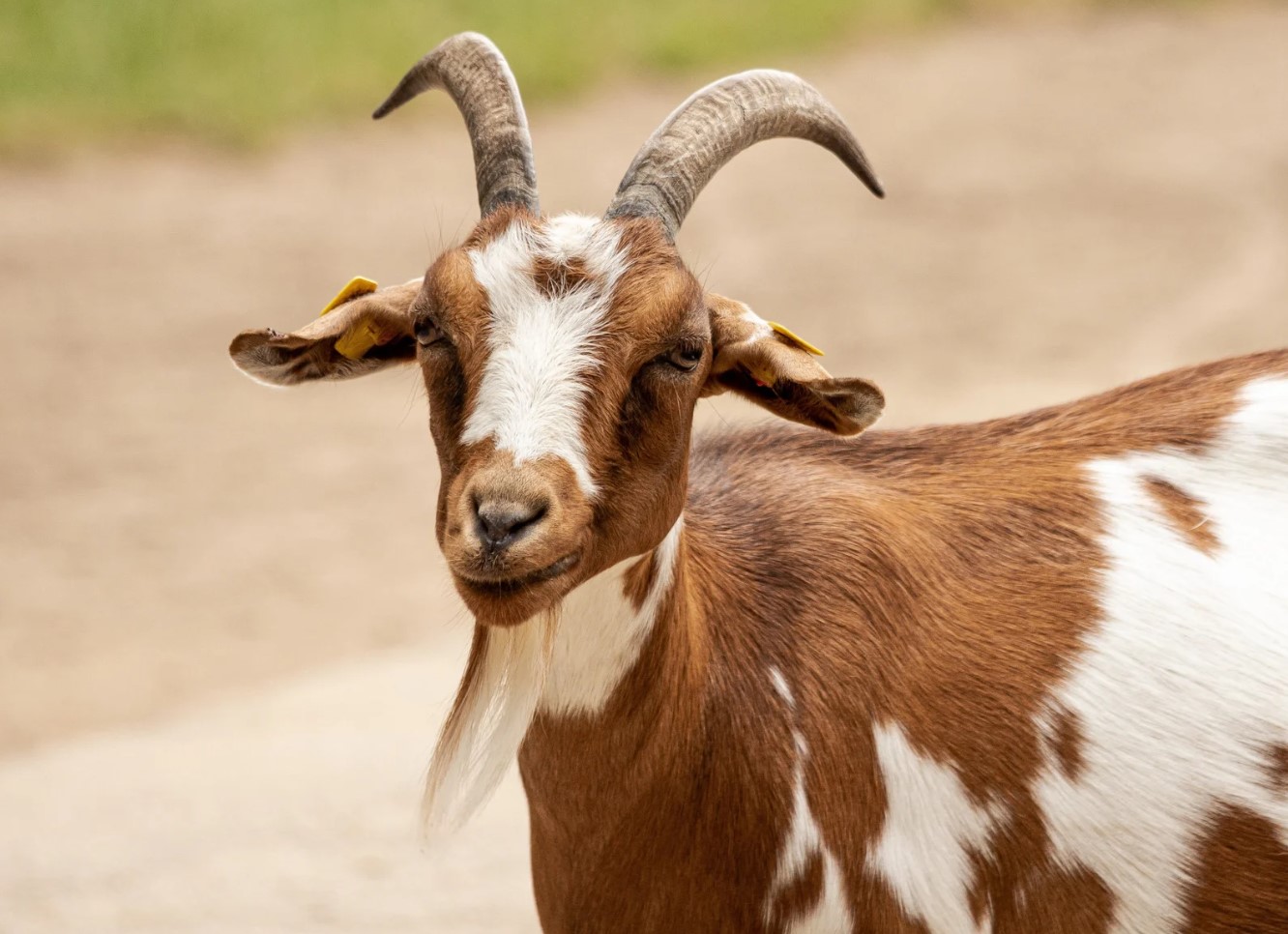
The Role Of Goats İn Natural Weed Control
Goats are known for their usefulness in the field of agriculture. Aside from providing milk, meat, and fiber, they also play a crucial role in natural weed control. As plant eaters, goats can consume several types of weeds that are considered invasive species. This makes them ideal in eliminating weeds without having to use harmful chemicals that can damage the soil and cause harm to other organisms.
Goats are also able to target specific weeds, thanks to their selective grazing behavior. They can target weeds with high nutritional value, leaving behind the undesirable ones. This not only eliminates the weeds but also improves soil quality. Farmers can use this to their advantage by letting their goats graze the fields first before planting crops. This way, the soil is prepared, and the weeds are already taken care of, allowing for a much healthier crop yield.
- It is important to note, however, that not all weeds are safe for goats to consume. Some weeds can be toxic and can even cause health problems or death. That is why it is essential to consult a veterinarian or a professional goat farmer before introducing goats to your fields.
- Another advantage of using goats for natural weed control is that they are cost-effective. Unlike hiring a crew to remove weeds or using chemicals, goats require minimal upkeep costs. They can even provide a source of income as some farmers sell their goats for meat or milk production.
In the end, using goats for natural weed control is not only beneficial for farmers, but it is also environmentally friendly. It promotes sustainable and organic farming practices that eliminate the need for harmful chemicals, reduces soil erosion, and provides an excellent source of food for goats. So the next time you see a goat, remember that they are more than just cute animals; they play an essential role in maintaining a healthy and weed-free environment.
The Different Methods Of Goat Milk Production
Goat milk is a highly nutritious and delicious milk alternative that is becoming increasingly popular. It can be used in a variety of recipes and is an excellent source of calcium, protein, and vitamin D. However, the process of producing goat milk is not as simple as just milking a goat. There are several methods used to produce goat milk, each with its own advantages and disadvantages.
The Hand-Milking Method
The most basic method of producing goat milk is hand-milking. This involves squeezing the goat’s teats by hand to extract the milk. Hand-milking is a time-consuming process that requires a lot of patience and skill. It is best suited for small-scale production or for hobby farmers who have just a few goats. While this method allows for close contact with the animal and can be a rewarding experience, it is not very efficient and can lead to hand fatigue and repetitive strain injuries.
- Hand-milking is best suited for small-scale production.
- The method is time-consuming and requires a lot of patience and skill.
- It is not very efficient and can lead to hand fatigue and repetitive strain injuries.
The Machine-Milking Method
The machine-milking method involves the use of a milking machine. This method is faster and more efficient than hand-milking and is best suited for large-scale production. Machine milking also reduces the risk of contamination as the milk is collected directly from the teat into a closed system. However, machine milking requires a significant investment in equipment and can be stressful to the animal if not done properly. It also requires regular maintenance and cleaning to prevent the spread of infections.
- Machine-milking is faster and more efficient than hand-milking.
- It is best suited for large-scale production.
- Machine milking reduces the risk of contamination.
- It requires a significant investment in equipment and regular maintenance.
- Machine milking can be stressful to the animal if not done properly.
The Combination Method
The combination method involves using both hand-milking and machine milking. This method can be beneficial for small-scale farmers who want to increase their production without investing in expensive equipment. The combination method allows for the benefits of hand-milking, such as close contact with the animal and the ability to detect any problems early on, while also improving efficiency and reducing hand fatigue. However, this method requires both the equipment and skill for both hand and machine milking.
| Pros | Cons |
|---|---|
| Allows for close contact with the animal | Requires both the equipment and skill for both hand and machine milking |
| Improves efficiency and reduces hand fatigue | |
| Reduces the risk of contamination | |
In conclusion, there are several methods used to produce goat milk, each with its own advantages and disadvantages. It is important to consider factors such as scale of production, efficiency, and animal welfare when deciding on a milking method. Regardless of the method chosen, proper care and nutrition for the animals is key to producing high-quality, nutritious goat milk.
Goat Milk As An Alternative To Cow Milk For Lactose-intolerant İndividuals
Have you ever experienced discomfort after consuming dairy products? This could be a sign that you are lactose intolerant. Lactose intolerance is the inability to digest lactose, a sugar found in milk and other dairy products. However, this doesn’t mean you have to give up on dairy altogether. Goat milk is a great alternative for lactose-intolerant individuals.
Goat milk is naturally lower in lactose than cow milk. This means that people who are lactose intolerant may be able to tolerate goat milk without experiencing discomfort. In addition to being easier to digest, goat milk is also rich in essential nutrients like calcium, protein, and vitamins.
- Calcium – Goat milk is an excellent source of calcium, which is essential for maintaining strong bones and teeth.
- Protein – Goat milk contains all nine essential amino acids and is a great source of protein, which is necessary for building and repairing tissues.
- Vitamins – Goat milk is rich in vitamins A and D, which are important for maintaining healthy vision and immune function.
Goat milk is also less likely to cause allergic reactions than cow milk. This is because the proteins in goat milk are different from those in cow milk. In fact, some people who are allergic to cow milk are able to tolerate goat milk.
If you’re looking to switch to goat milk, be mindful of the different taste and texture. Goat milk has a distinct flavor that some people may find more appealing than cow milk. It also tends to be thicker and creamier, which can make it a great addition to coffee, tea, and smoothies.
In conclusion, goat milk is an excellent alternative for lactose-intolerant individuals. It is easier to digest, rich in essential nutrients, and less likely to cause allergic reactions. Plus, it tastes great! Give goat milk a try and discover a new favorite dairy product.